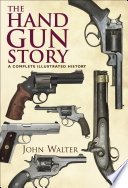A firearms expert “traces the history of the ‘one hand gun’ from its 14th century origins . . . surveying changing technology, techniques, and design” (Midwest Book Review). Ideally suited for both attack and self-defense, handguns have gotten smaller and deadlier. But the earliest pistols had a tendency to misfire. This was cured by the cap-lock, which proved a massive success in the American Civil War, with hundreds of thousands of cap-lock revolvers used on each side. Self-contained metal-case cartridges were to bring a fundamental change to handgun design: not only by allowing the introduction of revolvers that ejected automatically or were easily reloaded, but also by paving the way for the automatic pistol. World War I provided the handgun with a proving ground. At the end of the hostilities, with so much surplus weaponry, work on the handgun could have ceased; instead, a new developmental phase was begun by the nations that had emerged from the crumbling Imperial empires. During World War II, the efficiency of well-established designs was confirmed and new designs, such as the Walther P. 38, showed their potential. The emergence of the submachine-gun in 1945 reduced the status of the handgun—but only temporarily. The need for efficient self-defense shows no signs of lessening; and the rise in shooting for sport, particularly with the revolver, has sharpened the quest for efficiency. The never ending search for advanced production techniques shows that the handgun has as much a future in the twenty-first century as it had in the heyday of the Wild West, or in the trenches of Passchendaele.

